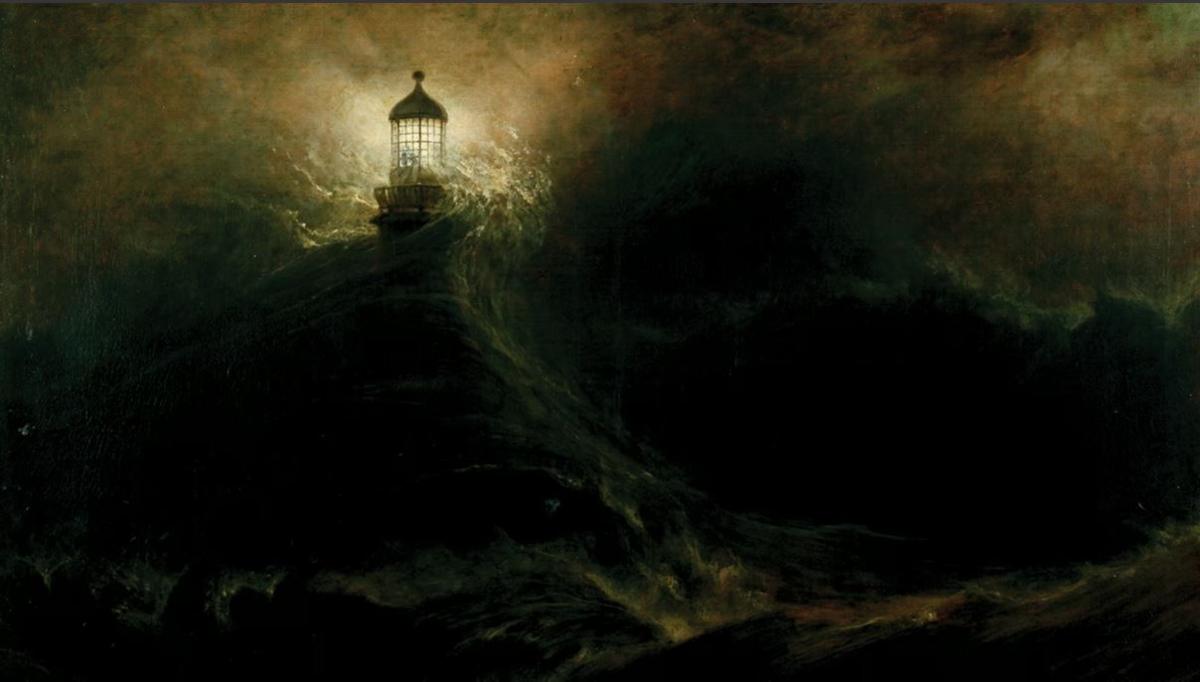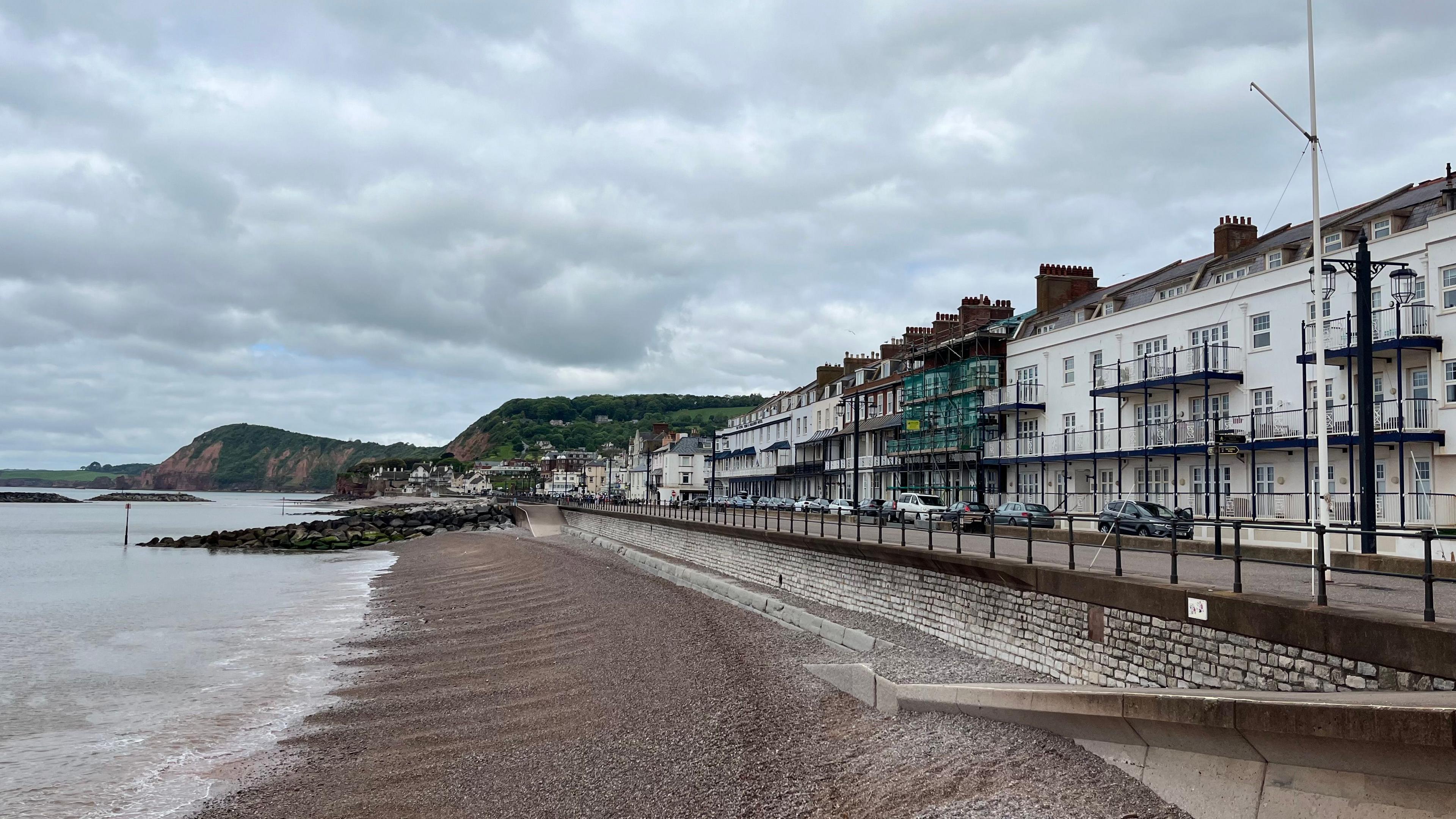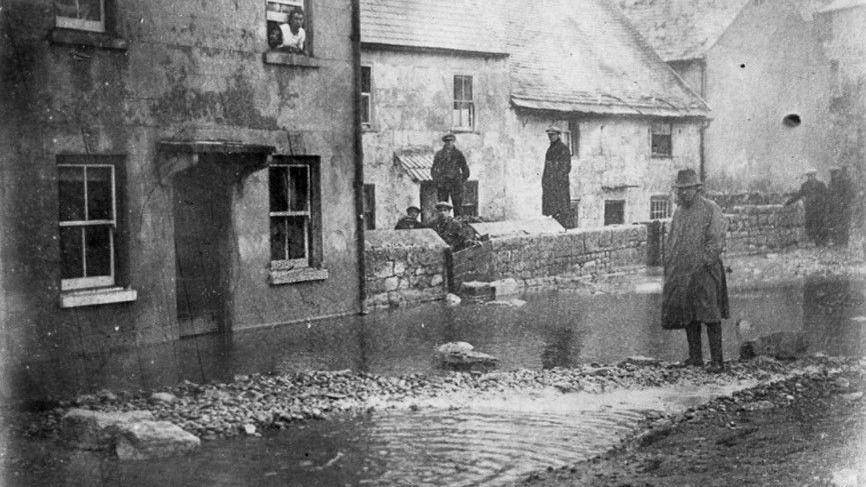200 years since Great Gale struck the South West

William Daniell's painting, Eddystone Lighthouse, During a Storm, portrays The Great Gale of 1824
- Published
On the night of 22 November 1824, a devastating storm struck England’s south coast and raged for two days.
Winds reached hurricane force causing widespread damage. Houses were flooded, whole villages destroyed, ships lost at sea and nearly 100 people killed.
In Plymouth, the storm sunk 22 vessels and swept away more than 200,000 tons of stone from the city’s new breakwater.
200 years later, The Great Gale is being remembered across the south of England and used by the Environment Agency to warn of the perils of extreme weather.
'Such violence'
Those who survived the terrifying night of 22-23 November included James Simmons, keeper of the Eddystone Lighthouse off Rame Head.
Mr Simmons later wrote a letter describing the might of The Great Gale.
He said: "The sea was tremendous and broke with such violence on the top and round the building, as to demolish, in an instant, five panes of the lantern glass."
The raging sea swirling around the lighthouse was also captured in a dramatic painting.
William Daniell's Eddystone Lighthouse, During a Storm shows the giant waves rising right up to the top of the tower.
The lighthouse weathered the storm but suffered significant damage.
Mr Simmons recalled: "At times the whole building appeared to jump as if resting on an elastic body.
"The water came from the top of the building in such quantities, that we were overwhelmed, and the sea made a breach from the top of the house to the bottom."

Low-lying houses along the Esplanade at Sidmouth were inundated during the storm
The oil painting, which was exhibited at the Royal Academy in 1825, is now on show at the Port Of Plymouth gallery at The Box.
The painting, which has become symbolic of the storm, was recently restored to its former glory to show the raging sea to full effect.
The gallery said: "Daniell captured the enormous power of the towering waves that almost envelop the lighthouse.
"The sea and the night sky merge, creating an oppressive darkness with only a small burst of light visible above the surging waves."
'Climate is changing'
The Environment Agency is using the anniversary of The Great Gale to raise awareness of extreme weather and flooding.
Meteorologists say The Great Gale was caused by a rare combination of hurricane force winds, spring high tides, extreme low pressure and towering waves.
Its severity was so extreme it is estimated to have a 1 in 10,000 chance of recurring each year.
Andrea Summers, Environment Agency flood and coastal risk manager for Wessex, said: "This anniversary serves as a stark reminder of the destructive power of nature and the devastating impact flooding can have on communities.
"Needless to say, we are much more resilient now than we were then, with major innovations in forecasting, warning and defence systems.
"But our climate is changing, sea levels are rising and extreme weather events are becoming more frequent."
Follow BBC Devon on X, external, Facebook, external and Instagram, external. Send your story ideas to spotlight@bbc.co.uk, external.
Related topics
- Published25 October 2024
